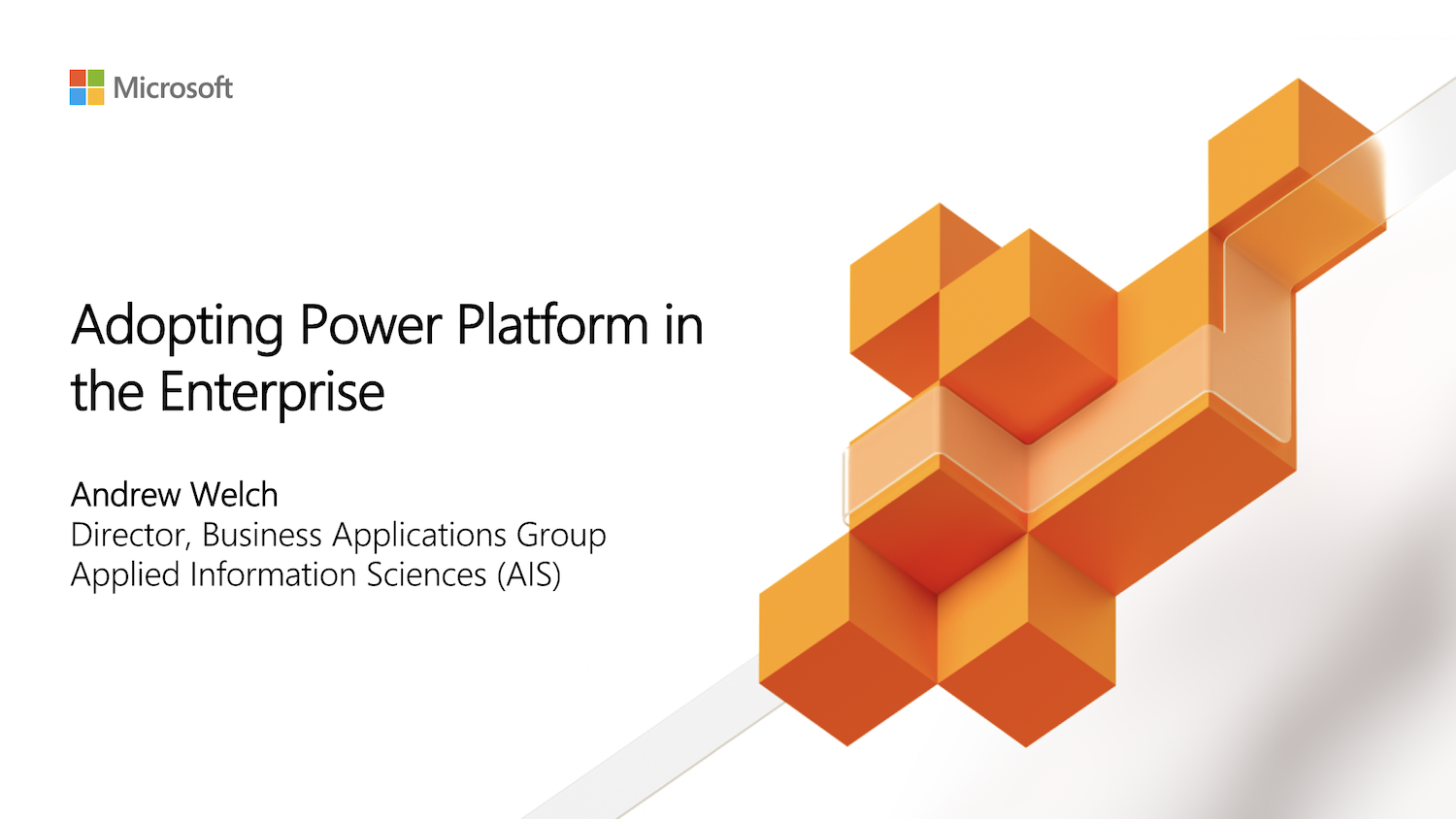

Power Platform is a First Class Citizen in the Cloud Transformation + App Modernization journey
That’s what low-code cloud transformation and app modernization is really about: Harnessing the “65% Opportunity” with Power Platform as a first-class citizen for business applications amongst Microsoft’s “Three Clouds”. So what's driving this? And — perhaps more importantly — how do we do this at scale? How do we migrate one, two, or ten thousand workloads to Power Platform?

Best Practice: Don’t be scared, embrace the Community!
The Microsoft Business Applications “Community” is a truly globe-spanning group of brilliant, capable, curious people who care deeply, meaningfully, and personally about not just the technology and its transformative potential, but about each other and about the world.

Adopting the Microsoft Power Platform in the enterprise
This session introduces the Power Platform Adoption Framework and gives an overview of its start-to-finish approach to help you and your organization get the most value out of any form of Power Platform available to you today. We also share how other enterprise organizations have scaled with large and complex needs using Power Platform and what were the tools, best practices and patterns they explored and used to become successful adopters.

Power Platform Adoption Framework is now open for community collaboration on Github. Join us!
Last week at the PowerApps + Flow User Group in London, I shared the news that ongoing development of the Power Platform Adoption Framework is now happening on Github. Developers everywhere use Github to create software, and now we’re going to use Github to further build the framework that enables people to create beautiful and useful things on Power Platform deployed in large, enterprise-grade organizations.

Explaining Power Platform: How do the pieces fit together?
We can't truly embrace what we don't understand. Having a common understanding is critical to determine common best practices for adoption and beyond. The Microsoft Power Platform is a vastly capable technology, but many still struggle to put all of its pieces together in their mind. We'll take a moment to change that here.
It’s time for a shared, community commitment to Best Practices adopting and developing Power Platform
Now that we have what I will call a mature and evolving platform, it’s time that the community around that platform get serious about meaningful best practices. We owe it to our customers, our employers, and one another to adhere to a shared commitment to excellence and a body of best practices that back up the way we adopt the platform and develop solutions there.
We need to be thinking Power BI when we think Power Platform Adoption Framework
We need to use Power Platform Adoption Framework as an opportunity to embrace the whole platform, which means thinking about all the component parts — Power BI, Flow, PowerApps (and Common Data Service!) — when we think about enterprise adoption.

Introducing Power Platform Adoption Framework, the start-to-finish approach to adopting Power Platform at scale
I am so excited to be sharing the first edition of the Power Platform Adoption Framework, the start-to-finish approach for adopting Microsoft’s Power Platform at scale. The white paper is available at this link. My hope is that the framework will continue to become a worldwide standard for enterprise-grade adoption of the Power Platform.

Enterprise management and governance are keys to scaling Power Platform
In other words, how do we get beyond individuals or pockets of people doing great things with the technology (PowerApps, Power BI, Flow, Common Data Service, Dynamics) and rather spread the benefits of the technology across the entire business so that everyone, every department and office in the organization benefits from Power Platform’s incredible capability?

Power Platform is all PLATFORM: Driving value, lowering costs, and building your organization’s future with Microsoft’s next great business technology
We don’t invest in one-off apps anymore, i.e. a CRM in one corner of your network where you run your sales, something in another where you manage your delivery, clunky Human Resources Management off over there where you take care of your people, etc.. No, what we care about here is the platform where you integrate all of the above — not through monolithic one-size-fits-all ERP — but rather through elegant app experiences across all your users’ devices that tie back to that magical Common Data Service.
Three Trends Changing the Business Applications Landscape
The business intelligence, automation, and enterprise application landscape is changing dramatically. In the previous incarnation of enterprise technology, line-of-business owners were forced to choose between pre-baked commercial off the shelf (COTS) software, which was difficult to customize and often did not truly meet the business’s unique needs, or custom solutions that (though flexible and often tailor-made to the business needs of the moment) cost more and were far riskier to develop and deploy.

